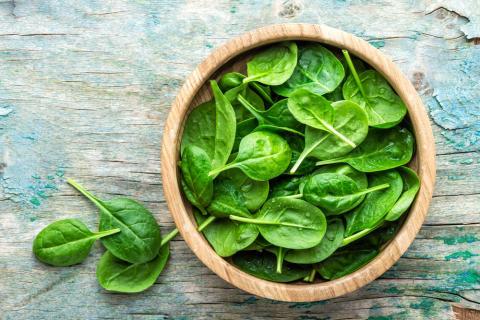
I see many of my patients are living a healthy lifestyle and eating a plant-based diet. It is especially important for me to make sure that these patients have enough of the essential mineral: iron. I can determine if a patient is low in iron by looking at the size of their red blood cells, levels of iron circulating in the blood as well as the body’s storage of a form of iron called ferritin. Inadequate iron stores among women of childbearing age is very common and is often caused by menstrual blood loss and low dietary intake of iron. There are two forms of iron: heme and non-heme. Heme iron is concentrated in animal sources and is very well absorbed into our bodies compared to non-heme iron. Non-heme iron comes from plant sources and is not absorbed as well. By knowing which plant-based foods are excellent sources of iron, we can use food as medicine to prevent the effects of inadequate iron.
The essential functions of iron:
- Enhances oxygen delivery to the body
- Supports energy production
- Supports production of blood
- Required for synthesis of thyroid hormone
- Plays a role in immune function
Iron may be useful for the prevention or treatment of:
- Fatigue
- Mild depression or low mood
- Impaired mental concentration (brain fog)
- Low exercise tolerance
- Hair loss or thinning/Alopecia
- Hypothyroidism
- Infertility
- Dysfunctional uterine bleeding
- Menorrhagia (heavy periods)
- Restless leg syndrome
- Preterm labor
- Impaired athletic performance
- Uterine fibroids
- Chronic infections
- Chronic lead poisoning
QUALITY PLANT SOURCES OF IRON (Non-Heme Iron)
Excellent sources (4-6mg per serving)
- Soybeans – 1 cup
- Lentils – 1 cup
- Spinach – 1 cup
- Sesame seeds – ¼ cup
- Garbanzo beans – 1 cup
- Lima beans – 1 cup
- Olives – 1 cup
- Navy beans – 1 cup
- Swiss chard – 1 cup
- Kidney beans – 1 cup
Very Good sources (2-4mg per serving)
- Cumin – 2 tsp
- Beet greens – 1 cup
- Collard greens – 1 cup
- Pinto beans – 1 cup
- Tofu – 4 oz
- Pumpkin seeds – ¼ cup
- Green peas – 1 cup
- Blackstrap molasses – 2 tsp
- Quinoa – 1 cup
- Cashews – ¼ cup
Good sources (1-2mg per serving)
- Brussels sprouts – 1 cup
- Parsley – ½ cup
- Turmeric – 2 tsp
- Bok choy – 1 cup
- Asparagus – 1 cup
- Mustard greens – 1 cup
- Turnip greens – 1 cup
- Leeks – 1 cup
- Beets – 1 cup
- Kale – 1 cup
- Broccoli – 1 cup
Go Organic! Organic crops have been found to contain significantly more iron compared to conventionally grown crops.
+ VITAMIN C! + Consuming 50 milligrams of vitamin C together with non-heme (plant) iron foods can increase or optimize iron absorption, making it possible to triple the absorption of iron. This amount of vitamin C can be found in an orange, kiwi, ½ grapefruit, ¾ cup strawberries or ¾ cup pineapple.
QUALITY ANIMAL SOURCES OF IRON (Heme Iron)
- Mollusks: clams, mussels, oysters, scallops, octopus
- Fish: wild-caught sardines
- Liver: from organic, grass-fed, free-range pork, lamb, chicken, turkey, beef
- Beef & Poultry: organic, grass-fed, free-range.
In some situations, the supplementation of iron (tablets, liquid, etc.) may be appropriate and necessary to restore proper amounts of iron to the body. The recommended daily iron intake varies depending on the individual and iron can be toxic if supplemented in excess. It is unlikely to overdose on nutrients when we are receiving them from our diet and therefore the safest way to ensure good nutritional status. Consult your ND or Doctor for appropriate iron intake recommendations.








